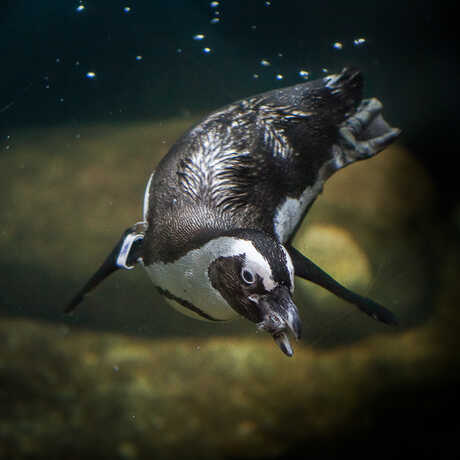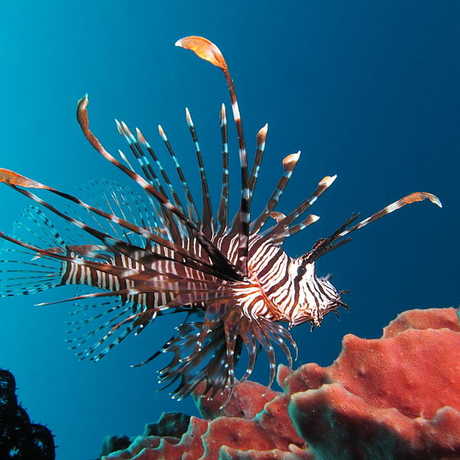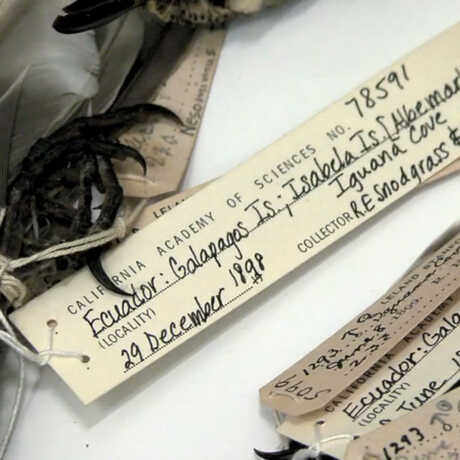The scientific dive team for the Academy’s expedition to the Cayman Islands included Associate Curator of Ichthyology Luiz Rocha, Steinhart Aquarium Director Bart Shepherd, and Diving Safety Officer Elliott Jessup. The team received scientific collection permits from the Cayman Islands Department of Environment.
Scientific Expeditions
Cayman Islands: Tracking Lionfish
For centuries, Cayman Islands residents have depended on local coral reefs for food, medicine, and other resources. When lionfish appeared off the coast of Little Cayman in 2008—an invasion that likely began with Floridians releasing home-aquarium pets into the ocean—the government reacted quickly to cull the population, but has struggled to stay ahead of lionfish populations ever since.
Originally from the Indo-Pacific, lionfish have no natural predators in these Atlantic waters. And because they have a voracious appetite for the region's smaller fish, their invasion could spell disaster for Caribbean reef ecosystems. In March 2014, Academy researchers traveled to the Cayman Islands to collect invasive lionfish, analyze their stomach contents, and gather data that can help to inform conservation strategies for the protection of native species.
The Team
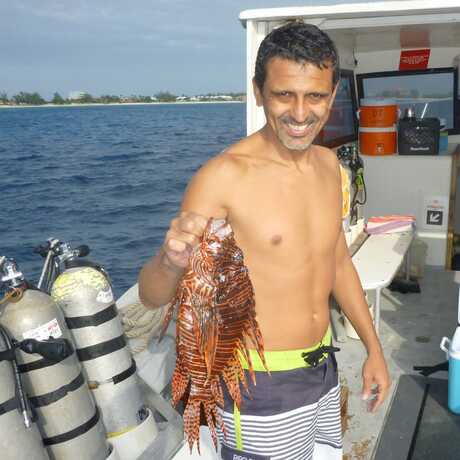
Hunting Lionfish
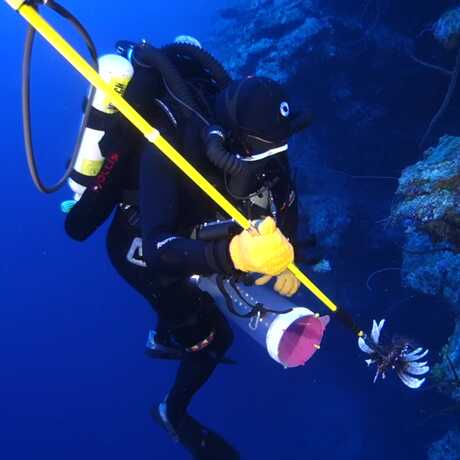
Luiz Rocha has been studying lionfish for many years, but in the Caymans, his team dove as deep as 400 feet to collect them. By analyzing stomach contents, Rocha and colleagues will be able to determine what the invaders are feeding on (i.e. what local populations may need increased protections), and by observation, they were able to begin to asses whether local culling programs are successfully holding local lionfish populations at bay—or whether the species is escaping the cull by going deep. Though data is still being analyzed, the team was quick to note they saw more lionfish, even at great depths, than expected.
The researchers also brought lionfish DNA samples back to their labs for a population genomics study. Determining how groups of lionfish differ from island to island in the Caribbean may provide new insights into how resources can be better used to control populations. With 40 pounds of lionfish culled during 20 hours underwater, they've got a lot of material to work with.
Culling Efforts
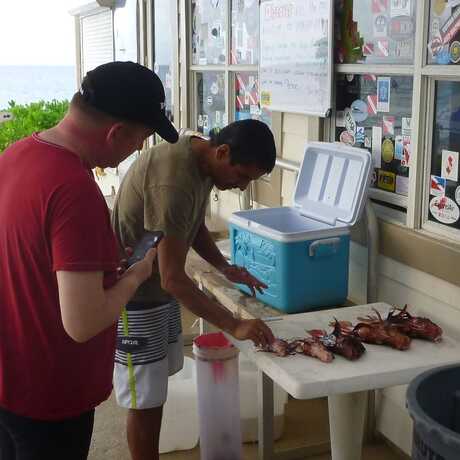
Targeted removal is the only known strategy for managing lionfish numbers, so Rocha and his team are working with local governments to encourage people to eat and hunt lionfish (which, fortunately, happen to be delicious). One example of control efforts in the Cayman Islands is a diving course called “Invasive Lionfish Tracker" that teaches local and visiting divers how to safely capture and euthanize them. Other examples of culling efforts include regular fishing tournaments and The Lionfish Cookbook, which was released by Reef Environmental Education Foundation in 2010.
The Department of Ichthyology is home to one of the largest and most important collections of fishes in the world, and is designated as one of eight International Centers for Ichthyology in North America. Meet the researchers, explore projects and expeditions, and more.
Be mesmerized by colorful coral reef fish, soaring stingrays, and adorable African penguins—streaming live to your device, 24/7.
